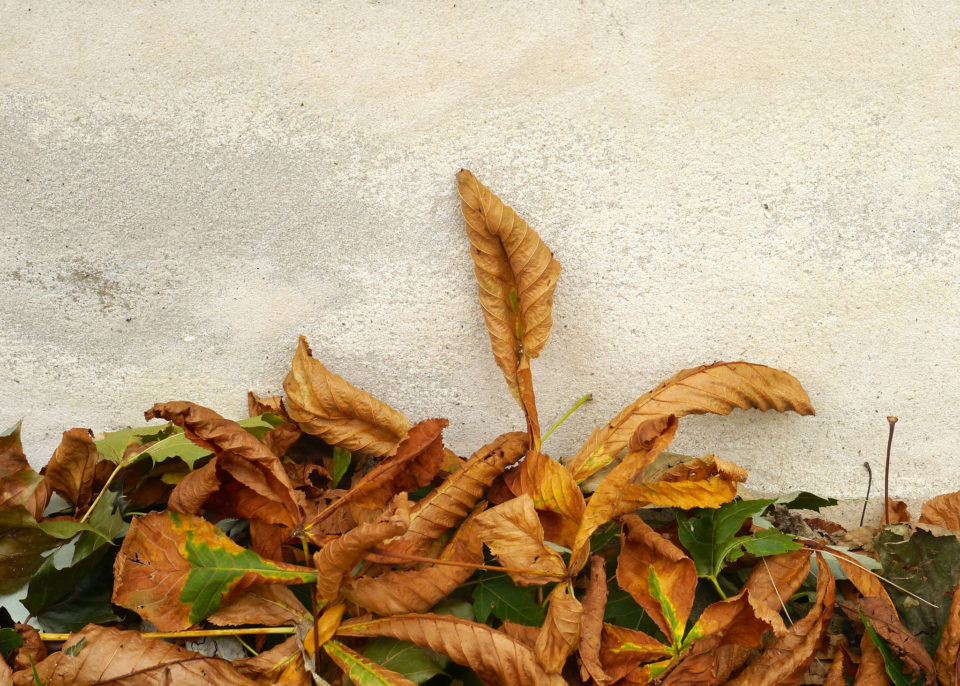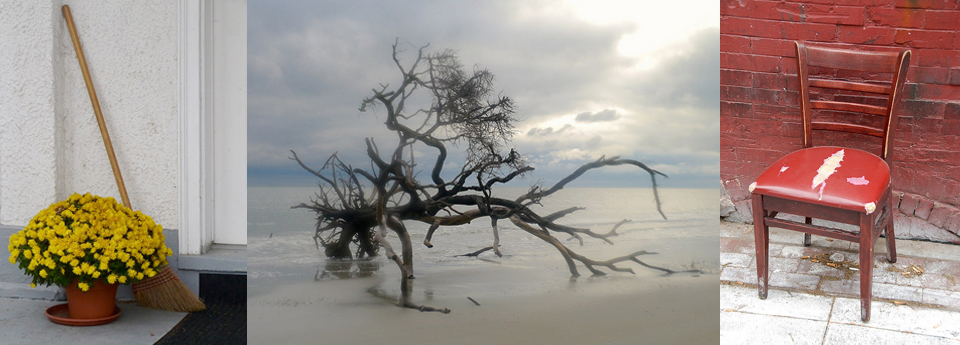
I’ve never been a big fan of still life paintings or photographs. Generally, I prefer the grand landscape or intimate moments in nature. That is, until I attended a photography show called “Flowers, Fruit, Books, and Bones” at the Center for Creative Photography in Tucson, Arizona. With more than sixty still life photographs from the center’s collection, it includes works from current photographers to old masters. The show is on until the end of April 2017 in case you have a chance to see it yourself.
In the past I’ve thought of still life as a collection of nostalgic objects, perfectly arranged and lit. With photography, background textures or filters are often added. They are beautiful, for sure, but just a little too perfect for my taste. This show made me think of still life in a different way. Here’s their description.
“Although at its most basic a still life is an assemblage of inanimate objects, historically the term refers to artworks that engage with concepts of achievement, ephemerality, and mortality. Still life pictures rely on symbolic objects to suggest impermanence: flowers, fruit, books, bones. The English term “still life” contrasts with the French term for the same genre, nature morte, which literally translates as “dead nature.”” ~ The Center for Creative Photography, Tucson, AZ
Let’s break this down, starting with “an assemblage of inanimate objects.” This opens up the subject matter to just about anything and it doesn’t say they are manually arranged. Instead, they could be found objects. I’m a big fan of accidental art, arrangements of items (dead or alive) that come together in a random way, usually on the ground.
They “engage with concepts of achievement, ephermerality, and mortality.” The objects are symbols that express ideas of accomplishment, creation, impermanence, even imperfection. There is nothing manufactured or perfect about them. The French term, “dead nature,” really appeals to me.
The Center says that “photographers use the characteristics of the medium such as focus, abrupt framing, and detailed description to extract, isolate, and describe their subjects. They direct our attention to shapes, textures, details, edges, colours, negative spaces, shadows, and unexpected angles.”
I decided to create a collection of still life photographs of my own using the following criteria:
* minimal in presentation
* background does not distract, only highlights the objects
* focus on one or more items (dead or alive)
* found rather than arranged
* suggest impermanence or imperfection
* symbolic in nature (the items have meaning beyond what they are)
Below are a few examples that fit my criteria.

“… arrange whatever pieces come your way.” ~ Virginia Woolf, Notebooks
Examples from the Exhibit
Ralph Gibson, Salt, Water, 1975
Robert Dawson, Open Book on Desert, Paiute Junk Yard, Nixon, Nevada 1990
Catherine Wagner, Alfred University, Science Classroom, Alfred, NY 1987
What are your thoughts on still life photography?
This is really interesting, Kim. Like you, I didn’t feel at all attracted to still-life photography (‘nature morte’) because I found it often look so contrived and artificial. Then I took a year-long class with Kim Klassen and was able to approach still-life in my own way without the falsely textured backgrounds and masses of Photoshop ‘gimmicks’.
I like all the criteria you mention above: minimal in presentation, found rather than arranged and symbolic in nature. I think it is the diversity of our own personal interpretations which gives us our own individual style which evolves as we experience new avenues.
I don’t have anything against textured backgrounds. I’ve used them myself and I’ve seen many examples done really well. It’s just not my direction at the moment. Thanks as always for commenting, Sandra.
I’ve never been a fan of arranged still life images. I also took the class Sandra mentioned with Kim and while I learned a lot, I turned to nature for my pictures. Most of them I did arrange, but some were found. I love your idea of found still life images and keeping them minimal. While I’m here, let me say how much I look forward to your post and the wealth of information you share!
Thanks so much, Cathy!
I have not given much attention to Still Life either; I’ve always felt more drawn to ‘Inner Life’ photos; those that reflect something from within all who bear witness to them.
This feels so intriguing to me though, I’m open to exploring this creative form – and like you, I’ll determine parameters; ‘creative limitations’ as the photographer for whom you recently guest posted describes it (setting limitations that lead to greater creativity).
Still Life – as in ‘life remains in there somewhere though not immediately seen.’ Perhaps the ghosts and whispers of memories or purpose fading or diminished, that kind of thing.
Such a beautiful portal to stories,poems, insights – thank you for this perspective shift Kim; your still life photos inspired me.
Thank you so much for this piece, Kim. Physical disabilities have put a stop to my wandering the high and mighty places, the mountains and the long and lonely beaches. For a while depression overtook my photographic activities and I was forced to stroll around the neighborhood close to home. Then one day, I came across a dead leaf on my driveway, a dead leaf that spoke to me of the theatrical mask, tragedy. Since then wonders have never ceased and your post was the icing on the cake. It opened up a whole new world for me. Now especially after a wind or rain storm I find myself within a couple of blocks of home, strolling with my head down searching for treasures. Thank you for putting a name to it; Still Life, for indeed that is what it is.
Yes! Thank you for sharing this, Vi. You don’t have to go far and wide, or to high and mighty places at all. I find that most of my photographs, still lifes and more, come close to home.